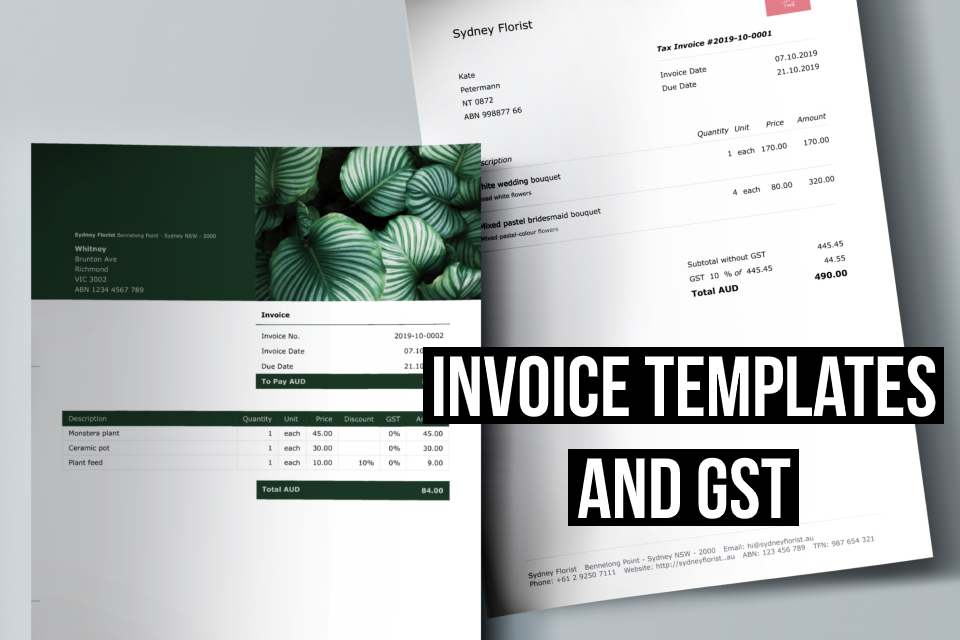Once of the easiest ways to issue invoices is to use invoicing software with automatic invoice templates. But when should invoice templates include sales tax, and how is an invoice template with GST different from an invoice template with no GST?

Invoice template requirements
Whether or not you’re registered for GST, your invoices should always contain some key pieces of information. You should therefore always use an invoice template that includes:
- Your details, including your business name, address, contact details, and Australian Business Number (ABN) or Australian Company Number (ACN)
- Your customer’s name and contact details
- A unique invoice number
- An issue date
- A due date
- Details about the goods or services provided, including the quantity and price per unit
- The total amount due.
Overdue invoices are still a big problem for Australian businesses, so to speed up the process of getting paid, you may also want to include payment instructions that state how your customer should pay and whether you charge late fees.
GST invoice template requirements
If you’re issuing an invoice for a taxable sale, you should make sure that your invoice template contains details about GST, including the total amount of GST due and the rate of GST charged.
Furthermore, an invoice that includes details about GST is technically a tax invoice, not just a regular invoice. This means that GST invoice templates should clearly be labelled as a ‘tax invoice’.
Requirements for an invoice template without GST
Compared to a GST invoice template, the requirements for an invoice template without GST are fairly similar; however, there are two major differences.
Firstly, an invoice for a non-taxable sale doesn’t need to include details about GST, so your invoice template should not contain the rate of tax charged or the total amount of tax due. Secondly, invoice templates without GST should simply be labelled with the term ‘invoice’ instead of ‘tax invoice’.
Should my invoice template include GST?
Whether you should be using an invoice template with GST or an invoice template with no GST depends on whether you need to issue tax invoices or regular invoices, and this varies according to whether the sale is taxable.
As a general rule of thumb, only businesses registered for GST will need to issue tax invoices, while businesses that are not registered should issue standard invoices using an invoice template without GST.
However, this rule might not apply to you if you sell to customers abroad or if a customer specifically requests a tax invoice. It’s therefore important that you do thorough research into whether you need to issue an invoice or a tax invoice.
GST and invoice templates in Debitoor
Invoicing software like Debitoor makes it easy for freelancers and small business owners to create and send invoices – with or without GST. All you have to do is fill in our automatic invoice template and click send.
Plus, our invoice template can easily be adapted depending on whether or not you’re registered for GST. Simply go to your account settings and find ‘Apply GST to invoices and quotes’.
Turning this option on will add the necessary fields to turn your invoice template into a GST invoice template, while turning this option off will remove these fields and ensure that your invoices follow an invoice template without GST.
